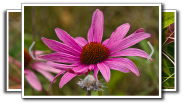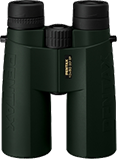oak long-horned beetle
(Urgleptes querci)
Conservation • Description • Habitat • Ecology • Distribution • Taxonomy
|
|
||||||||||||||
Description |
Oak long-horned beetle is a small flat-faced longhorn beetle. It occurs in the United States from Maine to northern Georgia, west to Minnesota and eastern Oklahoma. It occurs in southern Canada from Nova Scotia to Ontario. Adults are active from May through early September. They are seen on the leaves of trees. The larvae are found on numerous hardwood trees, shrubs, and vines, especially maple. Adults are ⅛″ to ¼″ (4 to 6 mm) in length. The body is oblong, moderately robust, and covered with short hairs. The color and markings are somewhat variable. The background color may be ash gray, brownish gray, or reddish gray. The markings are black. The face is nearly flat. The eyes are notched around the bases of the antennae. The antennae are thread-like and very long, much longer than the body. They have 11 segments. They are dull yellow, and they are slightly darkened at the end of each segment. The plate on the first segment of the thorax (pronotum) is wider than long but less than twice as wide as long. On each side margin, just before the rear angle, there is a short, broad, sharply pointed, backward projecting spine. The pronotum is narrowed in front, and there is a broad groove across the rear margin with large, deep pits (punctures). The markings are variable. There is usually a narrow, black, longitudinal stripe in the middle (middorsal) on the rear half, and a broad blackish stripe on each side (subdorsal) extending from the front margin almost to the rear margin. The wing covers (elytra) are rounded at the tip. Near the front margin there is a large black spot in the shape of the letter T. Just behind the middle there is a broad black band in the shape of an inverted letter W. On each lateral margin, forward of the band, there is a short black line. Near the tip there is a pair of small black spots. On each elytron the inner margin (suture) is black, and there is often one or two black spots between the lateral stripe and the suture. The legs are dark. On each leg, the third segment (femur) is thickened. The last part of the leg (tarsus), corresponding to the foot, is dark. It has five segments, but the fourth segment is minute, and it is concealed between the lobes of the heart-shaped third segment, making it appear that there are only four segments. |
Size |
Total length: ⅛″ to ¼″ (4 to 6 mm) |
Similar Species |
Habitat and Hosts |
Numerous hardwood trees, shrubs, and vines, especially maple |
Ecology |
Season |
May to September |
Behavior |
|
Life Cycle |
|
Larva Food |
|
Adult Food |
|
Distribution |
||
|
Sources |
|
| 5/14/2025 | ||
Occurrence |
||
|
||
Taxonomy |
|
Order |
Coleoptera (Beetles) |
Suborder |
Polyphaga (Water, Rove, Scarab, Long-horned, Leaf, and Snout Beetles) |
Infraorder |
Cucujiformia |
Superfamily |
Chrysomeloidea (leaf beetles and allies) |
Family |
Cerambycidae (longhorn beetles) |
Subfamily |
Lamiinae (flat-faced longhorn beetles) |
Tribe |
Acanthocinini |
Genus |
Urgleptes |
In a recent article (Bezark, L.G. & Santos-Silva, A. A new synonymy in American Acanthocinini (Coleoptera, Cerambycidae, Lamiinae. Les Cahiers Magellanes, n.s., 50 : 114-126, 10 fig.) the authors proposed transferring the genus Urgleptes to Polymitoleiopus, a subgenus of Jordanoleiopus, and raising that subgenus to full genus rank. The proposal has been adopted by New World Cerambycidae Catalog and by Lamiinae of the World. |
|
Subordinate Taxa |
|
|
|
Synonyms |
|
Leiopus querci Lepturges querci Lepturges quercus Lepturges querei Lepturges tristis Lepturgus querci Liopus quercus Polymitoleiopus querci Urgleptes tristis |
|
Common Names |
|
oak leiopus oak long-horned beetle |
|
Glossary
Elytra
The hardened or leathery forewings of beetles used to protect the fragile hindwings, which are used for flying. Singular: elytron.
Femur
On insects and arachnids, the third, largest, most robust segment of the leg, coming immediately before the tibia. On humans, the thigh bone.
Pronotum
The exoskeletal plate on the upper side of the first segment of the thorax of an insect.
Tarsus
On insects, the last two to five subdivisions of the leg, attached to the tibia; the foot. On spiders, the last segment of the leg. Plural: tarsi.
Visitor Photos |
||
Share your photo of this insect. |
||
This button not working for you? |
||
Alfredo Colon |
||
 |
 |
|
 |
||
MinnesotaSeasons.com Photos |
||
|
||
|
||

Slideshows |
|

Visitor Videos |
||
Share your video of this insect. |
||
This button not working for you? |
||
|
Other Videos |
||
|

|
Created: 5/14/2025 Last Updated: © MinnesotaSeasons.com. All rights reserved. |


